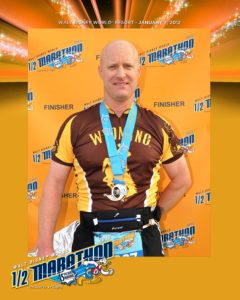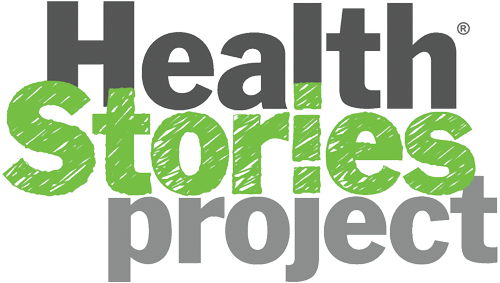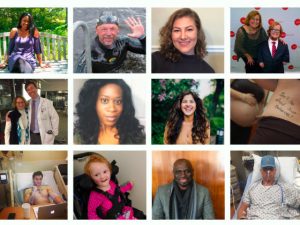In the spring of 2011, William Gould was “running hard” – working 60 plus hours a week in healthcare administration while also pursuing a master’s degree. Although he ate poorly, rarely exercised, and was often short on sleep, William didn’t worry too much about burning the candle at both ends. Until his wife, a registered nurse, called a “timeout.” She was noticing symptoms in William that she refused to ignore. And she made sure William didn’t ignore them, either.
“I go to the doctor when my wife tells me,” William chuckles.
The Starting Line
Soon thereafter, William was diagnosed with type 2 diabetes, a common metabolic disease in which the body is unable to produce sufficient insulin to regulate blood sugar levels. Type 2, or “Adult Onset”, diabetes is the most common form of the disease, making up roughly 90% of all cases worldwide.
Lifestyle changes including changes to diet and exercise routines are often the first and most important step towards treatment for type 2 diabetics. But William knew he wanted to treat his diabetes without meds, if he could. He decided to make a commitment to getting in shape and changing his lifestyle. He was inspired to think big.
“[There’s] a lot of research to support endurance athletics like distance running plus resistance training to make the body more able to use insulin,” says William. “I knew I had to commit to making changes. I had to do something big. I figured a half marathon was enough to tackle.”
And tackle it he did. William threw himself into training for the 13.1 mile race and improving his eating habits. Far from derailing his long-term health, William’s diagnosis actually set him on the right track.
“I think the diagnosis improved many aspects of my life,” says William, “I’ve sustained healthy eating almost to a fault. It’s also helped my family understand the importance of eating well, it even affects our family meals.”
[tweet_box design=”default”]”I think the diagnosis improved many aspects of my life” – William, A Runner with Type 2 #Diabetes[/tweet_box]
Training for a Better Life
“I was friends with a lot of marathon runners so I started talking to them and getting into it more and more.” William reflects.
William’s instinct to pair up with friends was a smart one. Finding exercise partners is a powerful strategy when it comes to sticking to your goals. Running partners bring accountability, support, motivation, and even healthy competition. They can be cheerleaders, teammates and confidants – all while working out.
William also consulted his doctor for guidance on running and exercising with diabetes. He learned that runners with diabetes especially need to focus on nutrient timing and meal planning in order to maintain good blood sugar levels before, during, and after activity. For William, there is also an increased risk of hypoglycemia when running, which is why he worked closely with his doctor and nutritionist while training for his first half marathons.



Through these efforts, running became a habit, and as William says, “the habit stuck to me like a sweat-soaked, moisture-wicking tee shirt.”
Now, William runs regularly and focuses on the positives, “I am not one of those runners who throw temper tantrums over my race times – I’m usually happy just to finish a race without injury,” he continues, “I just run, and occasionally complain about it to anyone who will listen.”
For a while, full marathons were in William’s sights, but hypoglycemia can take its toll even on the most dedicated runners. As William worked to increase his mileage, he continued to experience hypoglycemia even when he kept close tabs on his diet and blood sugar.
“I started getting sick, [and experiencing] hypoglycemic episodes, so I backed off,” he says. “I would love to run a full marathon but I’m pretty happy with half marathons, too.”
Going Public about Type 2 Diabetes
As William grew more confident in his ability to manage his condition, he began feeling compelled to share his personal experiences with the diabetes community online. He noticed that few of the voices in the “blogosphere” spoke to life with type 2 diabetes.
“I haven’t figured it out yet,” he says. “My theory is that there is a shame around type 2 diabetes – a stigma that the media is perpetrating, and many don’t understand or take it seriously.”
“My goal is to engage others in conversations about health and to have conversations about type 2 diabetes. There are very few [type 2] bloggers out there.”
William’s blog, i Run Diabetes (or iRD for short) is focused on helping everyday people think differently about managing their health. Through a blend of personal stories, advice, and hilarious satirical news stories (think The Onion), William shares his take on how to make small, sustainable healthy lifestyle changes.
William hopes that by sharing his own story, he will inspire others to think about diet and exercise as achievable and essential to their fight against type 2 diabetes. “I’ve talked with a lot of people who say they are type 2 too, and just take medicine and don’t worry about it much.”
William’s Tips for the Journey
Type 2 diabetes diagnosis can be absolutely overwhelming. Newly diagnosed patients often receive a staggering amount of information and advice. William cautions new patients, “It’s important to pause and be patient. Give yourself time to soak all the information in, and remind yourself that it’s going to be a journey.”
William has the following tips for those who are newly diagnosed:
- Take the diagnosis seriously. “Many people react to the shock and overwhelm of diagnosis by downplaying its urgency and significance. William cautions, “At first it might be easy to think, ‘I can take a pill for that’ and not change anything about your lifestyle or eating habits. Use the diagnosis and turn it into motivation to get healthy again.”
- Have fun with your diet. “Unfortunately, you’re likely going to have to cut out a lot of foods that you love and that can be very disheartening, but fear not, you can still eat great food.”
- Be an advocate for yourself. “It’s important to listen to your healthcare providers, however, they may not be able to give you the full picture when it comes to your condition. William suggests using all the resources, options, and information at your fingertips. The web is a wealth of information on both type 1 and type 2 diabetes and most health plans will cover visits with a certified dietitian. William says, “Rely on credible sources of information and use what you have!”
- Remember no one is perfect. “I strive to do well 90 percent of the time, but every now and then, I just eat what I want. I don’t beat myself up about it since 90 percent of the time I do well.”
- Use the fear. “The diagnosis scared me. My wife and sister-in-law are nurses, my brother-in-law is a doctor, so the diagnosis really got my attention. I don’t want to deal with long-term complications of diabetes, so I used that fear.”
- Give yourself time to adjust. Getting over the initial period of changing diet can be daunting and, let’s face it, miserable. But William says the first 10 days are the worst. If you can get through that initial period of change you won’t regret it, “I was miserable for 10 days, because I cut out all the carbs in – my diet. [Now] I don’t drink soda, and have – very few grains in my diet. If I eat that stuff, it makes me sick now. After a certain period of time eating well and exercising, [I felt] the positive consequences. I have more energy, more focus. I feel better. I took a lot of weight off and keep it off. I feel so much better living the way I live now.”


I read this article at the end of 2018 after being diagnosed as Type II Diabetic. My blood sugar at the time was over 400 mg/dl. After a month and a half on medication, My initial A1C was 13.5. I was depressed and started intense personal research. I had just turned 50 and Diabetes runs in my family….. I wished I had paid attention. I was not significantly overweight, but obviously had dense visceral fat. I read this article among many other items such as research papers from University of Glasgow, Dr. Bernstein’s diet plans and research, etc. This article particular inspired me to start running again. I initially couldn’t walk a mile very well as I had deteriorated from diabetic crash. I had dislocated ankles and one shoulder from loss of muscle. As I went on low carb high protein diet, getting fiber from ground flax seed, I went from walking to 1 mile slow jog in the first 6 months as I healed. I dropped my A1C to 6 in first 6 months. I had been motivated because my body could not handle the medication. I was eating less than 15 carbs a day to make progress. At the 9 month mark I had increased to my first 1/2 marathon run. I still do not take medication, and keep Net carbs less than 15 to 20 a day, though my total carbs are much higher from vegetables, etc. I struggle with internal gut damage and peripheral neuropathy from the crash. But have remained motivated. This article was one of the motivators for me. My 9 month A1C was 5.7. I am hoping to maintain. I am training for a marathon March 2019. My current long run is 14.5 to 19.5 miles. The decision day to set a goal to run again came from reading this article. In March 2019 I am running my fist marathon. Thank you for writing this article. It meant more to me than even I have explained so far. Thank you.